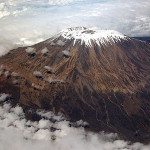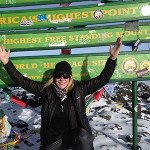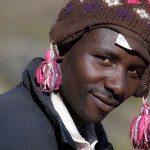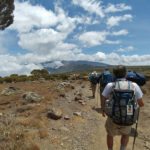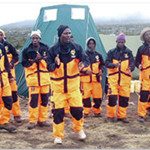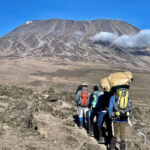Watch Vanessa O’Brien’s compilation video of the Explorers Grand Slam, where she climbs the Seven Summits and the North and South Poles.
Extreme mountaineer and Thomson Advisory Board member Vanessa O’Brien has a seemingly endless list of accomplishments. She’s summited the Seven Summits (which includes Kilimanjaro and Everest), and she’s the first woman to set a speed record to complete the Explorers Grand Slam in 11 months. Despite being a Guinness World Record holder, former CFO, and a 103.3 Amp Radio Bad*ss Chick of the Week, O’Brien remains one of the most humble people you’ll ever meet.
“I was never looking to set records,” she explained during a recent speaking event at the Boston College Club in Boston. “My goal was to accomplish Everest, and after I did that, I looked to see how I could continue my journey.”
From Banking to Climbing
O’Brien explained that before she started her mountaineering adventures, she wasn’t a risk taker – quite the opposite, actually. She was a banker, focused on analyzing data and tracking projects to completion. When the recession hit in 2008, she decided to take time off for a few years and accomplish something big. So, she chose Everest.
“Most people I’ve climbed with are not ‘mountaineers,’” she said. “They have full-time jobs and they just love nature, appreciate different cultures, or like setting goals. It wasn’t until I set the goal of Everest that I started training for it.”
 *O’Brien climbed mainland Australia’s highest peak, Mount Kosciusko, which was initially on the list of Seven Summits. The highest point in Oceania, however, is New Guinea’s Carstensz Pyramid, a more difficult climb that replaced Kosciusko as one the Seven Summits in the 1980s. Vanessa covered all the bases and climbed both!
*O’Brien climbed mainland Australia’s highest peak, Mount Kosciusko, which was initially on the list of Seven Summits. The highest point in Oceania, however, is New Guinea’s Carstensz Pyramid, a more difficult climb that replaced Kosciusko as one the Seven Summits in the 1980s. Vanessa covered all the bases and climbed both!
Kili: Round Two
Climbing Everest got O’Brien hooked on the feeling of summiting – so much so that she decided to embark on a mountaineering challenge to reach the Seven Summits, or the highest peaks of every continent. From there, she aimed to complete the Explorers Grand Slam, which includes all seven summits plus the North and South Poles. Though she had already climbed Mount Kilimanjaro years prior, she would have to summit a second time to be considered for the women’s fastest record – and that’s what brought her to Thomson Safaris.
“The reason I’m such a big fan of Thomson is they take care of the community they visit,” she said. “They have a great track record among the guides and porters.”
Her experience with her porters was nothing short of amazing. She recalled that they were extremely engaging and attentive, and they all went out of their way to make her feel welcome.
“They joked that they had American names – Bob, Jack, Jim – but we knew they were just trying to make it easy for us. So instead, my group adopted Swahili names,” she laughed. “They were all so sweet and funny.”
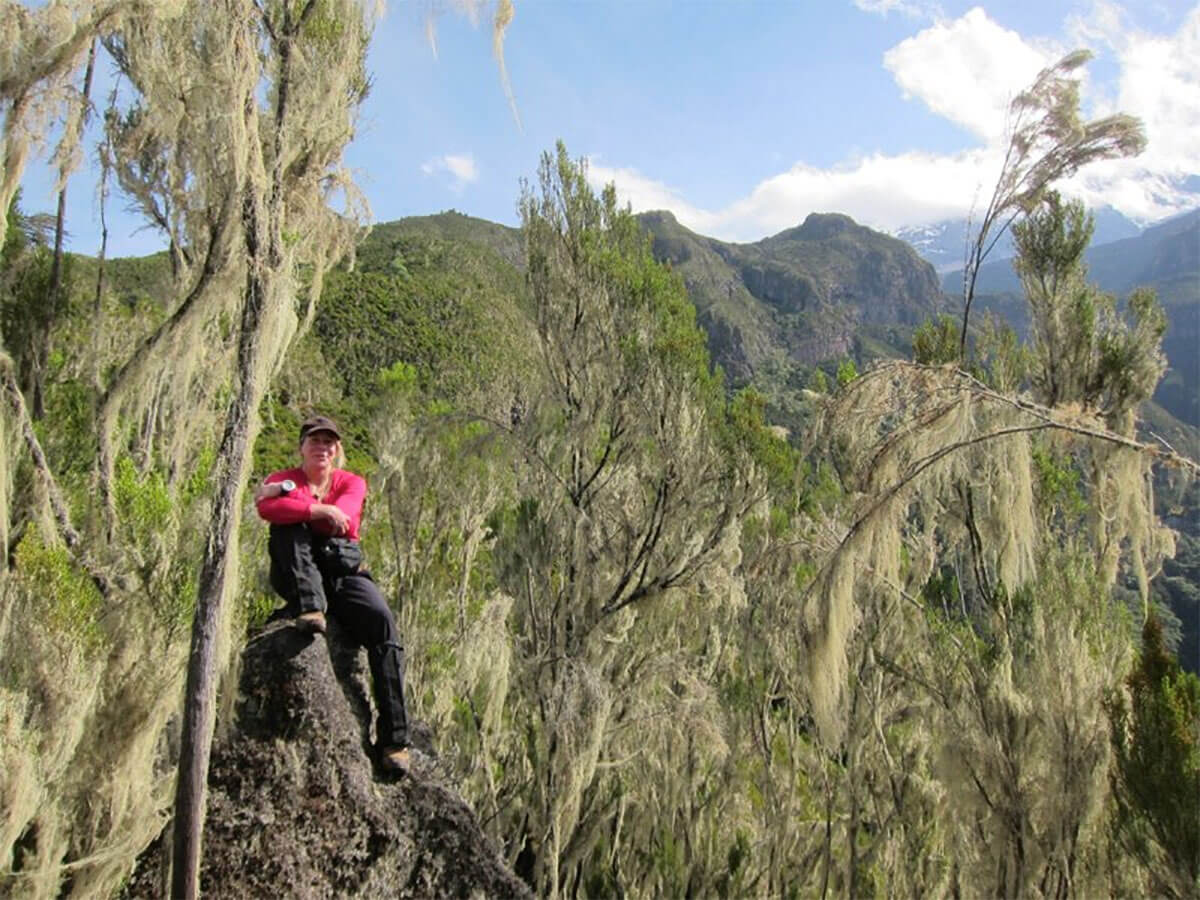 O’Brien climbed to the top of a boulder on Kili. This incredible photo was worth the extra effort!
O’Brien climbed to the top of a boulder on Kili. This incredible photo was worth the extra effort!
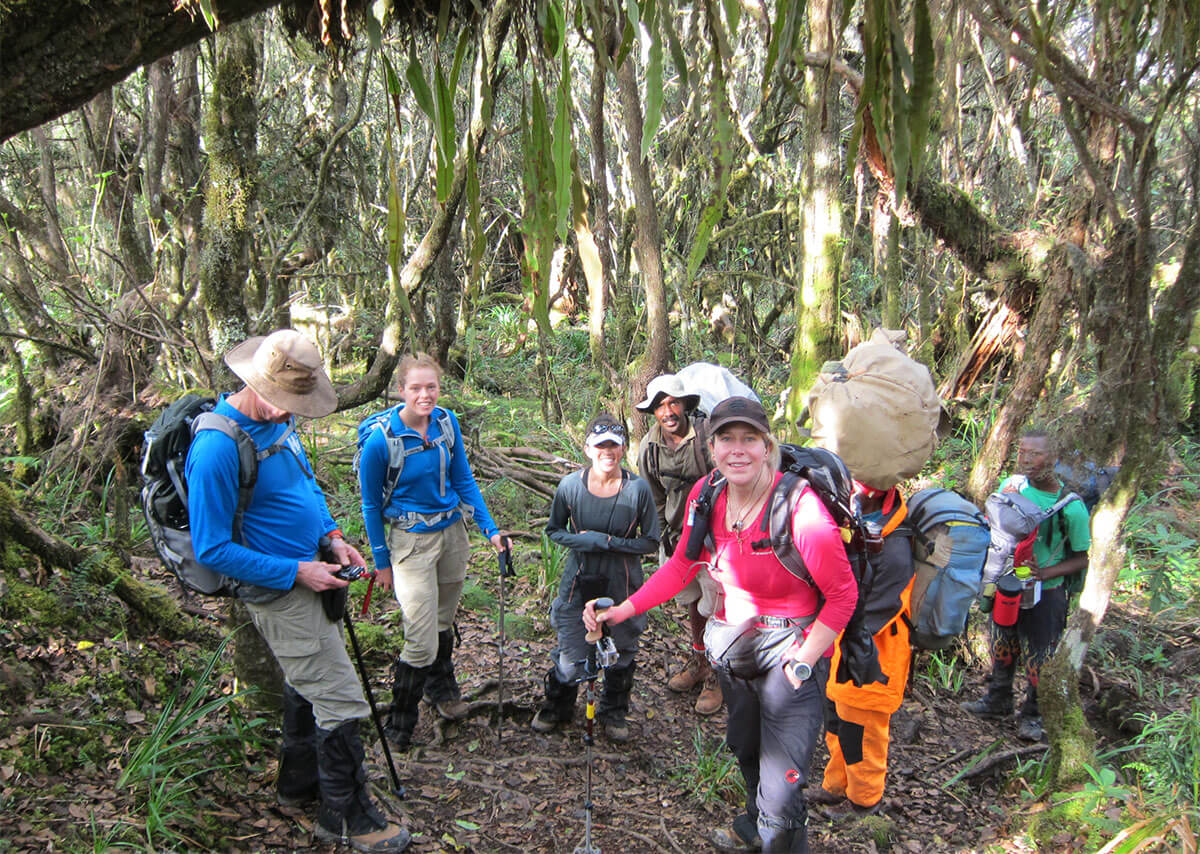 Pole, pole – Swahili for “slowly.” O’Brien and her group kept a slow pace as they climbed Kili.
Pole, pole – Swahili for “slowly.” O’Brien and her group kept a slow pace as they climbed Kili.
The Mountain for Everyone
O’Brien explained that Kilimanjaro is a great mountain for trekkers of all levels. It’s one of the only seven summits you can climb with minimal gear (just trekking boots and poles), and as a result, it’s accessible to anyone who’s relatively fit.
That being said, it’s still important to remember it’s the tallest freestanding mountain in the world.
“You can’t go too high too fast,” she stated. “You have to respect a mountain that’s 19,341 feet tall.”
To set yourself up for success, O’Brien had a few tips. When training to climb Mt. Kilimanjaro, stairs are a great tool – and she should know. She trained for Everest in the stairwells of one of Boston’s skyscrapers. She also recommended keeping your mind occupied with positive thoughts throughout your trek. Persevering through a challenging climb, she noted, will help you develop tools that you can use off the mountain for the rest of your life.
 Celebrating at the summit of Mount Kilimanjaro – a feeling unlike any other.
Celebrating at the summit of Mount Kilimanjaro – a feeling unlike any other.
“You’ll learn to take calculated risks, whether it’s in your job, a relationship, or anything else,” she explained. “And the best part is, the skills you learn throughout the process are always yours to keep.”

